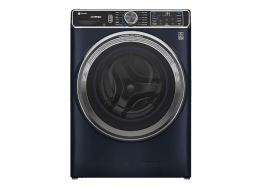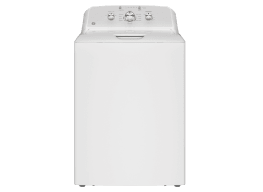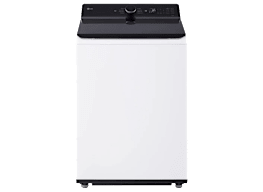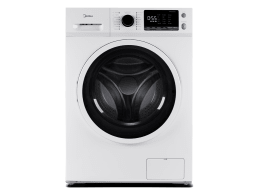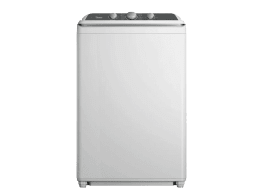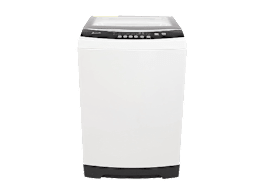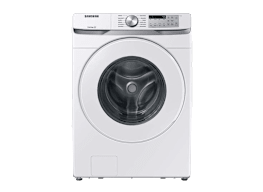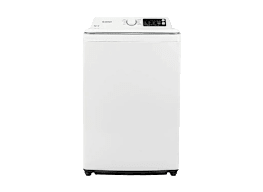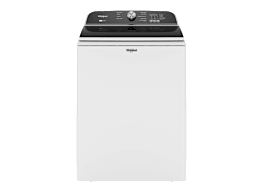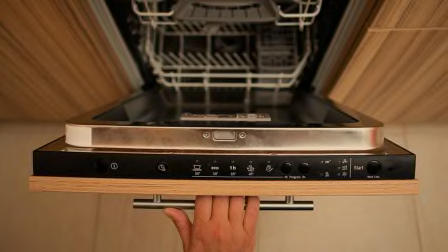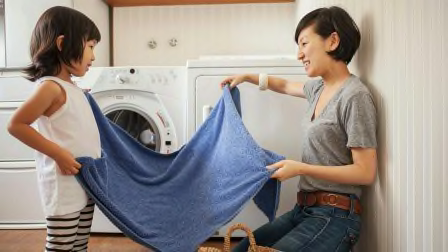Insider Tips for Buying a Washing Machine
Find the right washer at a great price with advice from Consumer Reports' experts and industry pros
When you shop through retailer links on our site, we may earn affiliate commissions. 100% of the fees we collect are used to support our nonprofit mission. Learn more.

Ready for a new washing machine? Considering it’s a major investment—washers we’ve tested range in price from $450 to upwards of $2,000—that you’ll be living with for years to come, you want to arm yourself with some intel before you shop.
So we asked Mark Allwood, CR’s market analyst for washing machines, to share his insider tips and shopping tactics to help you make the best choice. We also talked with industry experts from GE and LG to get their insight on the factors that shoppers might not think of as they search for a new washer. Check out their advice below, as well as ratings and reviews of a few top-performing washing machines from Consumer Reports’ tests.
First, to learn more about your options, see our washing machine buying guide. CR members can check our washer ratings to see how more than 100 models perform in our laundry lab tests. And once you get your new machine home, rely on our washing machine maintenance advice to make sure the appliance lasts.
Don’t Just Go for the Newest Model
Your instinct may be to shop only the latest models. After all, they have the newest technology for getting your clothes clean, right? Not necessarily, Allwood says.
Do you own a Samsung high-efficiency top-loader bought between March 2011 and November 2016?
Millions of Samsung washers were recalled due to a safety issue. Read about the related class-action lawsuit to see if you can file a settlement claim.
Don’t Be Tempted by Super-Low Prices
Agitator top-loaders are typically the least expensive type of washing machine. But we’ve found that models that cost less than $500 usually earn mediocre ratings or worse in most of our washer tests, and they’re pretty noisy, too.
If you can spend an extra $100 to $150, you’ll find more options and better overall performance. The same advice applies to HE top-loaders costing less than $500.
Able to stretch your budget to about $700? You can get a front-loader that delivers top-notch cleaning. (Many of the top performers in CR’s washing tests are front-loaders.)
Front-loaders are typically the most expensive type of washing machine, with some costing well over $1,000. But in the past several years manufacturers have introduced models that are priced to compete with top-loaders.
Exclusive Models Aren’t So Exclusive
A big-box retailer may promote a washing machine as an exclusive and display it prominently, but just because a washer is exclusive doesn’t mean it’s significantly different from its competitors.
“A manufacturer doesn’t make an entirely different washer for just one retailer, but it will make minor tweaks, like adding a cycle or two,” Allwood says. But because retailers—not manufacturers—have the final say on a product’s price, you may see exclusive washers on sale more often.
To get the best deal on essentially the same washer, check the prices of various retailers’ exclusive models. You’ll know the machines are comparable if the model numbers are very similar.
You Have a Lot More Choices Than White
Manufacturers continue to add colors to their washer lineups. For about $100 more than the standard white models, you can get a washing machine that’s sapphire blue (GE), champagne (Samsung), or black stainless (LG and Samsung). And all major manufacturers offer dark gray laundry appliances, a nod to the stainless steel look. For real stainless, you’ll have to spend a bit more.
You won’t find every color option in stores, but it’s easy to check out a model’s color selection online at manufacturer or retailer websites. Most of the models in CR’s washing machine ratings are white, but you can search using the model number of the washer that you’re interested in to see whether other colors are available.
Budget for Extras
Not all washing machines come with hoses for installation, and if you’re buying a matching dryer, you’ll usually have to buy a venting kit, says Taryn Brucia, a spokesperson for LG. “Customers should be aware that these are additional costs when they are budgeting,” she adds.
For example, hoses can add $30 to your bill, and so can a venting kit. If you’re stacking your front-loading washer and dryer, you’ll need a specific stacking kit for the set, which costs $40 to $90.
Want your old washer hauled away? Be prepared to pay a fee for that, too. Big-box stores usually charge $25 to $30, though some stores include haul-away in the delivery, so ask for specifics. And don’t be afraid to negotiate.
Bigger Capacities Mean Bigger Machines
Many washers are wider, deeper, or taller than washers made a decade ago. And more washer capacity means you can do larger loads, which is helpful, considering it takes longer to do a load in today’s water-efficient washers.
But take note: Newer washing machine models might be 2 or 3 inches wider than the standard 27 inches, and several inches taller or deeper, so it’s important to measure your space. Allow for at least 6 inches behind the washer for water hookups, and an inch between the washer and dryer.
Also, be sure to measure doorways and hallways to see whether your new washer can fit through them. “Unlike refrigerators or ovens, washers and dryers do not get significantly narrower, should you choose to disassemble the door from the unit to maneuver it through a doorway,” says Ken Rudolph, senior director of product management for clothes care at GE Appliances.
You can see the dimensions of each washer that Consumer Reports tests in our washing machine ratings. We also note which front-loaders can be stacked with their matching dryers.
Don’t Forget About Convenience
When installing a front-loading washer next to a dryer, having doors that open in opposite directions makes it easier to transfer laundry. For stacked front-loaders, having the doors open in the same direction is ideal.
Considering buying a front-loader? Getting laundry into and out of these machines requires a lot of bending down, so make sure you’re comfortable with that. If it’s too low, you can raise the machine by 4 to 16 inches by adding a pedestal, which costs $150 to $350.
If you’re purchasing a top-loader, reach into the machine in the store to gauge whether you can grab laundry at the bottom of the tub. (The tub may be deeper than you think.) If you’re planning on stacking your machines, make sure you can also see and reach the dryer controls. If the machines aren’t stacked in the store, ask the salesperson to calculate the combined height, with the stacking kit included.
Top Washing Machines From CR's Tests
CR members can read on for ratings and reviews of six washers, including front-loaders, HE top-loaders (the kind without a center post agitator), and agitator top-loaders. Some are CR Best Buys, delivering impressive performance at an appealing price.

















